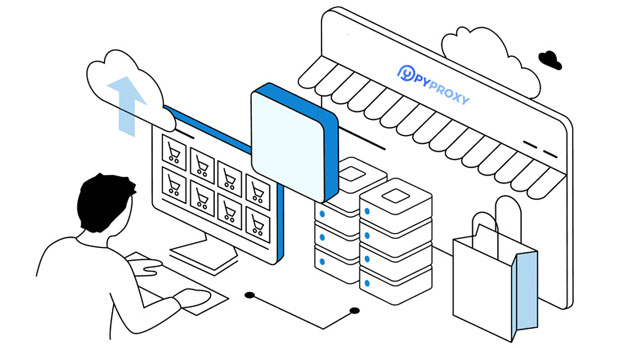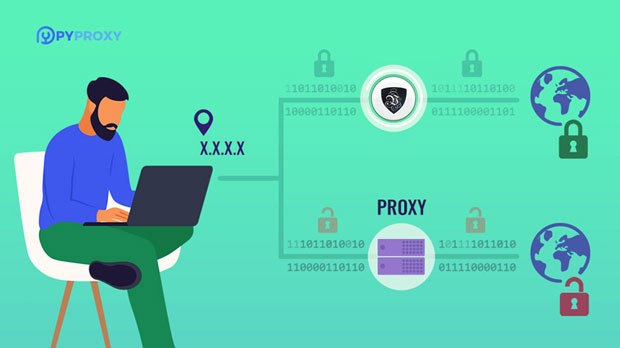When looking to purchase residential proxies that support multiple protocols, it's crucial to understand the different aspects that can impact your decision. Multi-protocol proxies allow you to use a variety of protocols such as HTTP, HTTPS, SOCKS5, and others, depending on your specific use case. These proxies are particularly useful for users who need versatility, anonymity, and reliability across different online activities. This guide will take you through the important factors to consider, the steps to follow, and what to look out for when buying multi-protocol residential proxies. Understanding Multi-Protocol Residential ProxiesBefore diving into how to purchase multi-protocol residential proxies, it's essential to understand what they are and why they are beneficial. A residential proxy routes your internet traffic through a real residential IP address rather than a data center server, offering better anonymity and reducing the chances of getting blocked. Multi-protocol proxies, on the other hand, support various connection protocols that can accommodate different needs, such as web scraping, account management, or online shopping, all while ensuring security and smooth performance.Why Choose Multi-Protocol Residential Proxies?Multi-protocol residential proxies provide several key advantages:1. Versatility in Usage: With multiple protocols, you can switch between HTTP, HTTPS, and SOCKS5 based on the task at hand, such as scraping data from websites, managing multiple social media accounts, or conducting online marketing campaigns.2. Increased Security: These proxies offer a higher level of security compared to regular proxies. By masking your real IP with a residential address, they protect you from surveillance and cyber threats, making your activities more private and secure.3. Avoid IP Blocking: Residential IPs are less likely to be flagged or blocked by websites since they resemble typical user traffic. By using multiple protocols, you increase your chances of bypassing various security measures put in place by websites to prevent data scraping or automation.4. Better Performance: Multi-protocol proxies provide better speed and reliability, especially for tasks that require high bandwidth or complex network requests. This can be critical when working on large-scale projects that need to maintain uptime and efficiency.Steps to Purchase Multi-Protocol Residential ProxiesNow that you know the benefits, let’s walk through the process of purchasing multi-protocol residential proxies:1. Evaluate Your Requirements: Determine why you need multi-protocol residential proxies and what specific features are important to you. This could include the number of proxies, the protocols supported, the locations of the proxies, and the level of support provided by the provider.2. Research Reliable Providers: Not all proxy providers are created equal. Look for companies that offer residential proxies with support for multiple protocols and have a good reputation in the market. Check online reviews, customer feedback, and any case studies that demonstrate their reliability and performance.3. Check for Compatibility: Ensure that the proxy provider supports the protocols you need (HTTP, HTTPS, SOCKS5, etc.) and that they are compatible with your intended use case. Some proxies are better suited for browsing, while others excel in tasks like web scraping or automating social media accounts.4. Verify Proxy Pool Size: The larger the proxy pool, the more options you’ll have for avoiding bans and maintaining anonymity. A larger pool of residential IPs increases your chances of finding proxies that work well for your specific needs, especially when performing high-volume tasks.5. Test the Proxies: Many providers offer trial periods or money-back guarantees. Take advantage of these offers to test the proxies in real-world scenarios before committing to a purchase. During the testing phase, assess the speed, reliability, and overall performance of the proxies.6. Consider Pricing: Pricing can vary significantly between providers. While the cheapest options may be tempting, remember that you often get what you pay for in terms of quality and performance. Consider your budget but prioritize factors like speed, reliability, and support over price alone.What to Look for in a Good Multi-Protocol Proxy ProviderWhen choosing a provider, there are a few key features and qualities that you should look for:1. High-Quality Residential IPs: Ensure that the provider offers real residential IPs rather than datacenter IPs, which are easier to detect and block. High-quality residential IPs come from a diverse range of locations, giving you the advantage of looking like a regular user from different regions.2. Protocol Flexibility: A reputable provider should offer a variety of protocols (HTTP, HTTPS, SOCKS5), allowing you to choose the best one based on the specific task. This flexibility ensures you can adapt to different needs without needing to purchase separate proxies for each protocol.3. Strong Customer Support: Good customer support is essential, especially when you encounter technical issues or need assistance configuring the proxies. Look for providers with 24/7 customer support via multiple channels such as live chat, email, or phone.4. Scalability: If your needs grow, you want a provider that can easily scale with your requirements. Whether you need more IPs, faster speeds, or additional features, choose a provider that can accommodate future demands without complications.5. Security and Privacy: Look for providers that prioritize your privacy. This includes secure connections, no-logs policies, and strong encryption protocols to protect your data.Common Use Cases for Multi-Protocol Residential ProxiesMulti-protocol residential proxies are perfect for a variety of use cases, including:1. Web Scraping: Collecting data from websites without getting blocked is one of the most common uses for residential proxies. Multi-protocol proxies allow you to rotate IPs and switch between protocols, ensuring your scraping operation remains smooth and uninterrupted.2. Ad Verification: Marketers and advertisers use proxies to verify the placement of ads across different websites. By using residential IPs with multiple protocols, they can simulate real user traffic and test ad visibility from various locations.3. Social Media Automation: Managing multiple accounts on social media platforms can get tricky, as these sites are quick to detect automated activity. Using multi-protocol proxies helps you simulate organic user behavior and avoid detection.4. Online Shopping: When purchasing limited-edition products or participating in flash sales, residential proxies help mask your real IP and avoid getting blocked by the website, giving you an edge in competitive environments.Conclusion: Making the Right ChoiceWhen purchasing multi-protocol residential proxies, it's important to understand your specific needs and how different features will impact your experience. Whether you need proxies for data scraping, social media management, or other purposes, the right provider can make all the difference in terms of performance, security, and scalability. By considering factors like pricing, support, and protocol options, you can ensure that you make an informed and effective purchase that suits your requirements.
Sep 01, 2025



































































